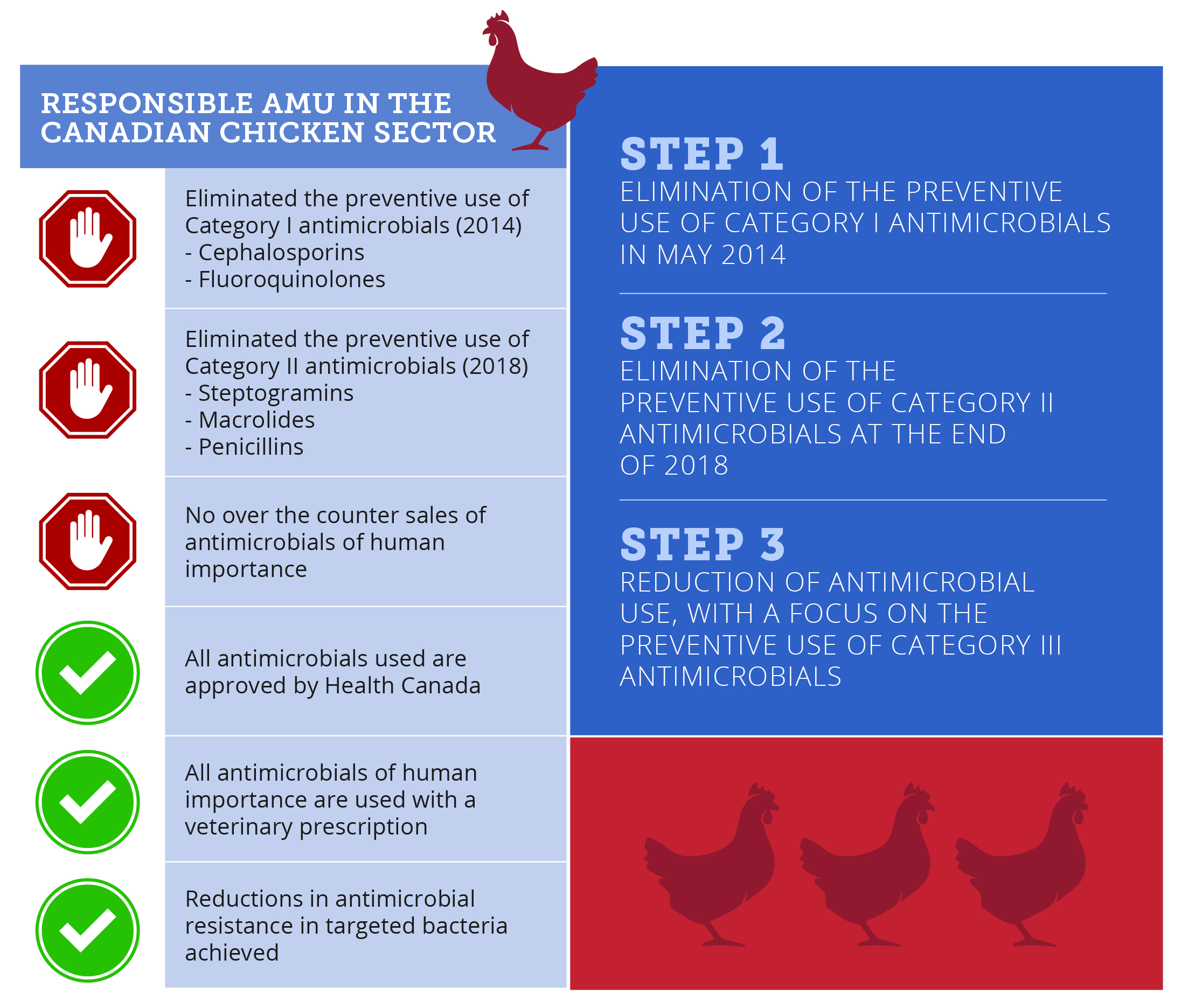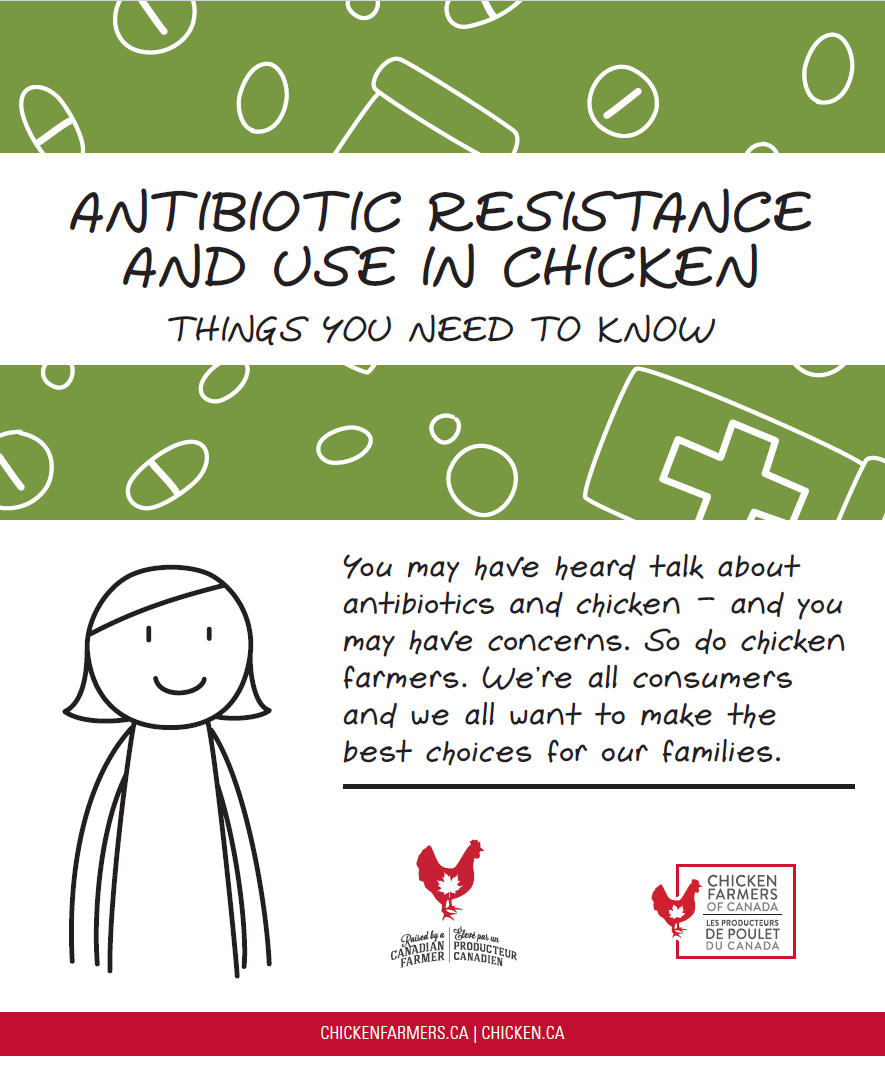


 Français
Français


Canada’s chicken farmers continue to evolve their production practices in response to consumer preferences, and they’re clear: Canadians want to know where their food comes from, how it’s raised, and what goes into it. Part of the curiosity surrounding what goes into one’s food is the question of medicine usage on the farm, or antibiotics, which can also be referred to as antimicrobials.
Initiated in 2011, Chicken Farmers of Canada’s (CFC) Responsible Antimicrobial Use (AMU) Strategy has led the way in understanding antimicrobial use patterns, promoting good production practices, guiding research, and reducing antimicrobial use.
CFC’s Responsible AMU Strategy is a sector-wide approach built on the foundations for reduction, surveillance, stewardship, and research and innovation.

The success of these initiatives has been demonstrated through the Public Health Agency of Canada’s surveillance program – the Canadian Integrated Program for Antimicrobial Resistance Surveillance (CIPARS). CIPARS has demonstrated an elimination of preventive use and has pointed to the chicken sector’s AMU strategy as a major factor for reduced antimicrobial resistance in targeted bacteria.
Building on the elimination of the preventive use of Category I and II, CFC is now focusing on a non-regulatory approach to further reducing antimicrobial use, with specific attention on reducing the preventive use of Category III antimicrobials.
Moving forward, CFC will be working with key supply chain stakeholders to promote reduction strategies, increase access to animal health products and share lessons-learned on reduction experiences.
This strategy, covering all chicken raised in Canada, works in collaboration with the federal government’s Pan-Canadian Framework on Antimicrobial Resistance and Antimicrobial Use, and is centered around the key guiding elements of surveillance, stewardship, and research.
As always, consumers can be assured that Canadian chicken meets rigorous federal and provincial food safety regulations. The Canadian Food Inspection Agency monitors and inspects chicken to ensure there are no issues with antibiotic residues in the meat.
As CFC’s Responsible AMU Strategy evolves, the strategy will continue to provide a sustainable means of meeting consumer expectations, protecting the health and welfare of birds, and preserving effective treatment options.
